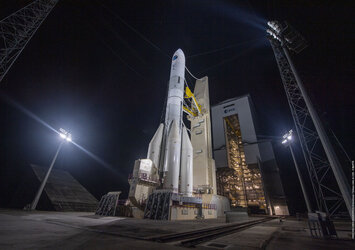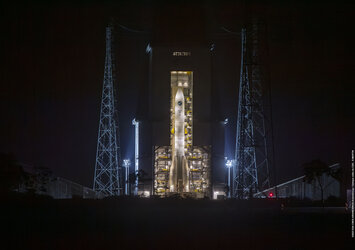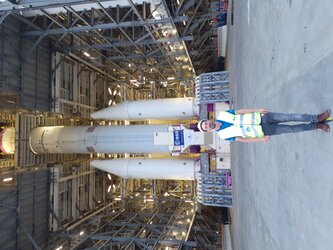Accept all cookies Accept only essential cookies See our Cookie Notice

About ESA
The European Space Agency (ESA) is Europe’s gateway to space. Its mission is to shape the development of Europe’s space capability and ensure that investment in space continues to deliver benefits to the citizens of Europe and the world.
Highlights
ESA - United space in Europe
This is ESA ESA facts Member States & Cooperating States Funding Director General Top management For Member State Delegations European vision European Space Policy ESA & EU Space Councils Responsibility & Sustainability Annual Report Calendar of meetings Corporate newsEstablishments & sites
ESA Headquarters ESA ESTEC ESA ESOC ESA ESRIN ESA EAC ESA ESAC Europe's Spaceport ESA ESEC ESA ECSAT Brussels Office Washington OfficeWorking with ESA
Business with ESA ESA Commercialisation Gateway Law at ESA Careers Cyber resilience at ESA IT at ESA Newsroom Partnerships Merchandising Licence Education Open Space Innovation Platform Integrity and Reporting Administrative Tribunal Health and SafetyMore about ESA
History ESA Historical Archives Exhibitions Publications Art & Culture ESA Merchandise Kids Diversity ESA Brand Centre ESA ChampionsLatest
Space in Member States
Find out more about space activities in our 23 Member States, and understand how ESA works together with their national agencies, institutions and organisations.
Science & Exploration
Exploring our Solar System and unlocking the secrets of the Universe
Go to topicAstronauts
Missions
Juice Euclid Webb Solar Orbiter BepiColombo Gaia ExoMars Cheops Exoplanet missions More missionsActivities
International Space Station Orion service module Gateway Concordia Caves & Pangaea BenefitsLatest
Space Safety
Protecting life and infrastructure on Earth and in orbit
Go to topicAsteroids
Asteroids and Planetary Defence Asteroid danger explained Flyeye telescope: asteroid detection Hera mission: asteroid deflection Near-Earth Object Coordination CentreSpace junk
About space debris Space debris by the numbers Space Environment Report In space refuelling, refurbishing and removingSafety from space
Clean Space ecodesign Zero Debris Technologies Space for Earth Supporting Sustainable DevelopmentApplications
Using space to benefit citizens and meet future challenges on Earth
Go to topicObserving the Earth
Observing the Earth Future EO Copernicus Meteorology Space for our climate Satellite missionsCommercialisation
ESA Commercialisation Gateway Open Space Innovation Platform Business Incubation ESA Space SolutionsEnabling & Support
Making space accessible and developing the technologies for the future
Go to topicBuilding missions
Space Engineering and Technology Test centre Laboratories Concurrent Design Facility Preparing for the future Shaping the Future Discovery and Preparation Advanced Concepts TeamSpace transportation
Space Transportation Ariane Vega Space Rider Future space transportation Boost! Europe's Spaceport Launches from Europe's Spaceport from 2012Latest

Caroline during combined test for Ariane 6
Thank you for liking
You have already liked this page, you can only like it once!
Caroline Aussilhou, Launch System Engineer in the Ariane 6 architect team, part of the Space Transportation Directorate of ESA, seconded from France’s space agency CNES during the combined test loading test 2.1 at Europe's Spaceport in French Guiana.
On 24 October 2023, a team of CNES, ESA, Arianespace and ArianeGroup personnel, including Caroline, completed a full-scale wet rehearsal of the new Ariane 6 rocket that was fuelled and then drained of its fuel. The test lasted over 30 hours with three teams working in shifts of 10 hours each.
The goal was to increase the robustness of the launch system and to test emergency safety procedures with an interruption of the countdown from simulated anomalies.
The wet rehearsal – called combined test loading, abbreviated to CTLO2.1 – was the third time the Ariane 6 ground teams practiced a full launch countdown, after a first rehearsal on 18 July 2023 and a first ignition of the main engine on 5 September 2023. The CTLO2.1 test concentrated on system robustness and how well Ariane 6 and the teams handle situations at the edge of the operational parameters. This time, the operations were performed at night to test operations in cooler ambient temperatures, while the July and September tests were run in daylight.
Ariane 6 uses liquid oxygen and hydrogen as its fuel to power into space. These power-dense liquids are great fuels but need to be chilled to extreme temperatures below -250°C, making them hazardous to work with. At these temperatures the liquids will instantly expand if it heats up and can cause condensation or even ice on the rocket as it cools down in the surrounding tropically humid air.
Ariane 6 tanks hold 180 tonnes of propellant, which is why fuelling and then draining operations take so long – it took over seven hours to drain the liquid hydrogen from its tanks alone. Engineers are constantly adapting flow rate and monitoring temperatures, pressure in the tanks and pipes, and the ground systems underground pipelines that extend through hundreds of meters to transport the fuel to the rocket.
-
CREDIT
ESA -
LICENCE
ESA Standard Licence

Ariane 6 during nighttime rehearsal

Ariane 6 before wet dress rehearsal

Ariane 6 in the spotlights

André in front of Ariane 6 test model















 Germany
Germany
 Austria
Austria
 Belgium
Belgium
 Denmark
Denmark
 Spain
Spain
 Estonia
Estonia
 Finland
Finland
 France
France
 Greece
Greece
 Hungary
Hungary
 Ireland
Ireland
 Italy
Italy
 Luxembourg
Luxembourg
 Norway
Norway
 The Netherlands
The Netherlands
 Poland
Poland
 Portugal
Portugal
 Czechia
Czechia
 Romania
Romania
 United Kingdom
United Kingdom
 Slovenia
Slovenia
 Sweden
Sweden
 Switzerland
Switzerland

























